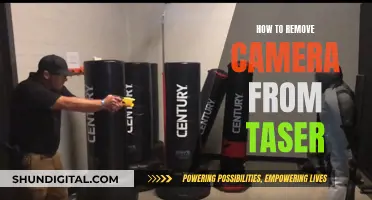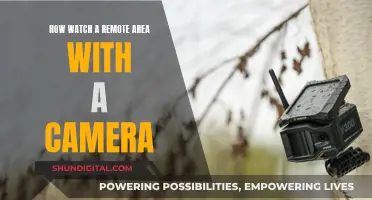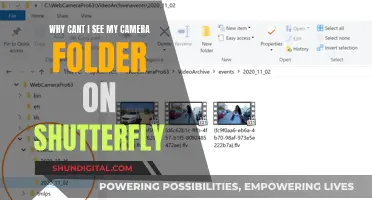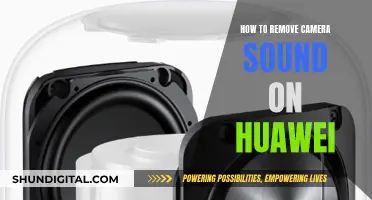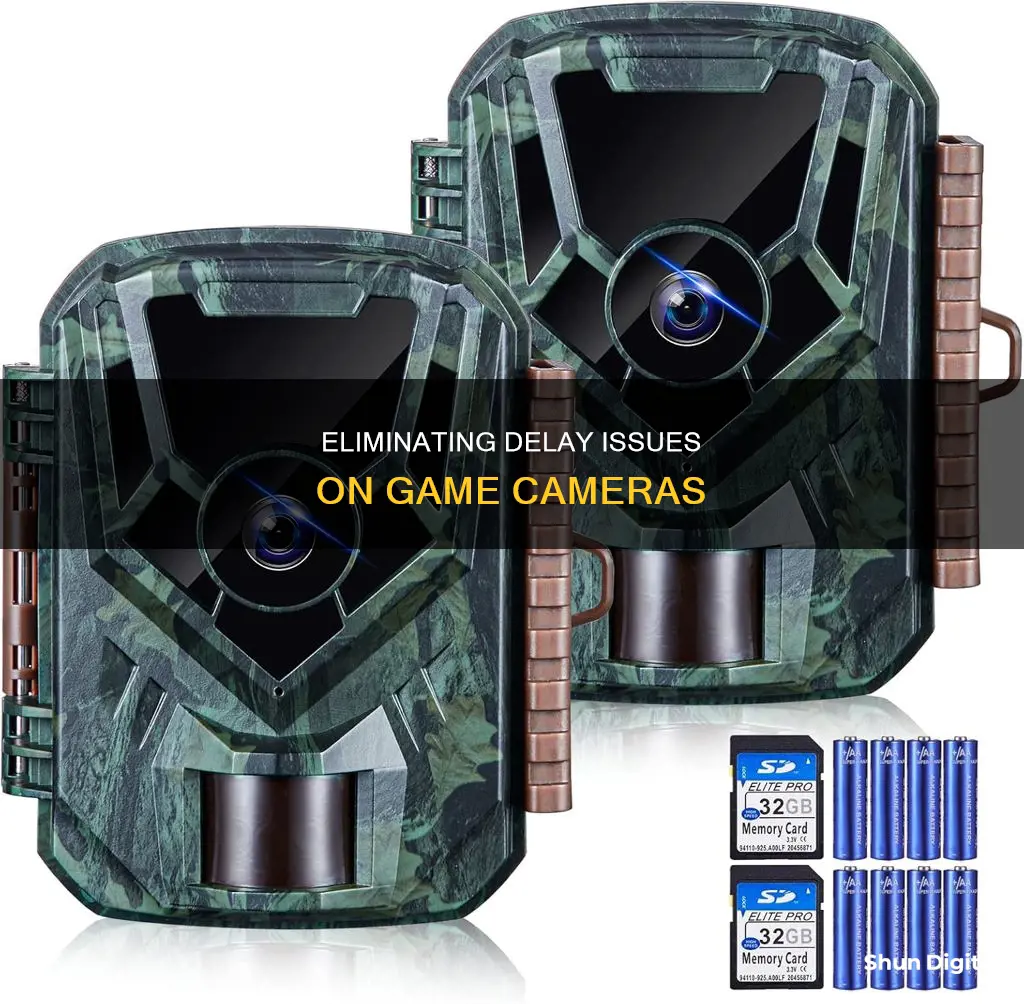
Game cameras are used by hunters and wildlife photographers to track and photograph animals in their natural habitats. These cameras are designed to operate without human supervision and are equipped with trigger mechanisms and delay time settings that determine when and how many pictures are taken. The delay time setting allows users to capture multiple images of animals when the trigger is activated, with common delay times ranging from a few seconds to several minutes. Adjusting the delay time is important to balance capturing sufficient images without filling the camera's storage with redundant photos. This setting also helps conserve battery life and storage space while enhancing the efficiency of reviewing captured images.
| Characteristics | Values |
|---|---|
| Purpose of delay setting | To determine how long the camera will be inactive after taking a series of photos or a video |
| Benefit of delay setting | Saves battery life, SD card space, and time spent sifting through recordings |
| Trigger types | Motion or light sensors |
| Delay times | Common delay times range from 7 seconds to 1 minute or more |
| PIR delay intervals | 5 seconds to 60 minutes |
| Ideal PIR delay setting | 30-second delay interval |
| PIR delay "sweet spot" | Between 5 seconds and 5 minutes |
What You'll Learn

The benefits of using PIR delay
PIR delay is an important feature of game cameras used by hunters and wildlife photographers. It refers to the amount of time a camera waits before shooting another photo or video after its initial trigger. The delay time can be set anywhere from 5 seconds to 60 minutes, depending on the model of the camera.
Save Battery Power and SD Card Space
The PIR delay setting saves battery power by reducing the number of photos taken of the same animal. It also saves SD card space by avoiding filling the card with very similar photos. This is especially beneficial if you are leaving your trail camera out for months at a time, as it will extend the life of your equipment and reduce the number of times you need to replace or upgrade your SD card.
Save Time Reviewing Footage
With PIR delay, you will save time when reviewing your footage as you won't have to sift through thousands of photos of the same animal. This is extremely useful if you are using multiple trail cameras, as it will reduce the number of photos you have to review by thousands.
Capture the Best Footage
The PIR delay setting can help you capture the best footage by ensuring you don't miss out on any special moments of rare wildlife. For example, if you are tracking deer, a shorter PIR delay will ensure you capture multiple pictures of the herd as they pass by at speed. On the other hand, a longer PIR delay will allow you to capture footage of animals feeding and interacting, without filling your SD card with duplicate images.
Customise for Your Needs
The PIR delay setting can be customised to suit your specific needs. Depending on the duration of your trail, your location, and the time of year, you can adjust the delay time to capture the desired footage. For example, if your camera is going to be out for a week or more, a longer delay time is recommended to ensure you have enough SD card space and battery life to last the duration of your trail.
Overall, the PIR delay setting on game cameras offers a range of benefits, including saving battery power and SD card space, reducing review time, capturing the best footage, and customising your camera setup to suit your specific needs.
Building a Spy Camera: Transforming Your Smart TV
You may want to see also

How to set PIR delay on your camera
PIR stands for passive infrared. PIR has a sensor that detects animals in motion, and the movement must happen between predetermined intervals. These delay intervals can range from 5 seconds to 60 minutes. The PIR delay interval is the amount of time that the camera waits before triggering another round of photos and videos.
There are two primary benefits to using the PIR delay interval. Firstly, it avoids filling the SD card with similar photos of the same animal. Secondly, it helps save your camera's battery, SD card space, and time spent rifling through useless recordings.
If you're getting started, it's recommended to start with a 30-second delay interval. This will capture passing animals and shoot multiple sequences and videos of any animals that stay longer than 30 seconds. After that, you can adjust the delay up or down depending on the conditions and your desired footage.
When to Use a Longer PIR Delay:
- If you've set out bait to attract animals, consider a PIR delay of 5 minutes. This will allow you to get footage of them feeding and interacting without filling your card with images of the exact same animal.
- If your camera will be out for a week or more, consider setting the delay to 30 seconds or more. This will give you several days to capture different actions each day and prevent running out of SD card space or battery.
When to Use a Shorter PIR Delay:
- If you're watching over a game trail or a location expected to have animals visiting frequently, consider a shorter PIR delay. For example, if you're capturing deer, they will likely be moving fast, so you'll want your camera to take several pictures. With a shorter delay, you won't miss out on capturing the full herd as they pass by.
- During the rut when bucks are chasing does, use a very short delay. Bucks will often follow a doe anywhere from 15 seconds to 5 minutes behind, so a short delay increases your chances of capturing them.
- When setting up your camera on pinch points such as funnels, creek crossings, or saddles, use a short delay setting. In these situations, the deer are typically moving through the area at a quick pace, so a short delay ensures you capture as much as possible.
- During hunting season, a short delay is ideal if you plan on checking your camera regularly. This will provide more information to make informed hunting decisions.
By experimenting with different PIR delay settings, you can optimise your camera setup for your specific needs and capture the best footage of wildlife.
Uninstalling Camera Raw Plugin: A Step-by-Step Guide
You may want to see also

Choosing the right SD card
The SD card you choose for your game camera is important as it can affect the video quality. If you're filming in high-definition and don't have the right SD card, it won't be able to keep up with your camera's speed, and the video will stutter. The speed of the SD card is crucial.
When choosing an SD card, consider the following:
- Speed: The speed of the SD card is crucial, especially if you are filming in high-definition. Look for cards with minimum write speeds of 70MB/s. The Video Speed Class (V30) is ideal for shooting in 4K UHD or Full HD as it provides a minimum continuous write speed of 30MB/s. If your camera shoots with a higher number of frames per second, opt for a faster memory card.
- Capacity: The capacity of the SD card depends on your camera's resolution and how often you will be recording. High-resolution videos (1080p or 4K) require more storage space. If your camera records continuously, you will need a high-capacity card. For practical purposes, SD cards ranging from 32GB to 512GB are sufficient.
- Durability: If your camera is stationed outdoors, you will need a memory card that can withstand temperature extremes, wet environments, and high winds. Look for SD cards that are durable and resilient against the elements.
- Compatibility: Ensure that the SD card is compatible with your game camera. Check your camera's specifications for the recommended speed class and capacity.
- Price: Consider your budget when choosing an SD card. Generally, the higher the capacity and speed of the SD card, the higher the price.
By considering these factors, you can choose the right SD card for your game camera, ensuring optimal performance and high-quality footage.
How to Control Your TCL 4K Roku TV Camera
You may want to see also

When to use a short delay
There are several instances when a shorter PIR delay interval is preferable. Firstly, during the rut when bucks are chasing does, a short delay ensures you capture images of the bucks even if they are following behind the does by a few seconds or minutes. Similarly, when setting up your camera on pinch points such as funnels, creek crossings, and saddles, animals are typically moving through the area at a quick pace. A short delay will enable you to capture multiple images of each animal as they pass through, rather than having the camera bogged down taking numerous photos of the same animal for an extended period.
During hunting season, a short delay is also advantageous. Most people use trail cameras for this specific purpose, and a shorter delay provides more information to make informed hunting decisions. Additionally, if you are monitoring a wildlife trail or a location that is expected to have frequent animal visitors, a short delay is ideal. This ensures that you don't miss out on capturing images of animals passing by, especially if they are moving at a faster pace.
The benefit of a short delay is that it provides a higher quantity of recordings, which is often preferred by wildlife watchers. It also reduces the chances of missing a special moment of rare wildlife. However, it is important to note that a shorter delay will result in more photos, which can fill up your SD card quickly and require more time to sift through. Therefore, it is essential to consider the duration your camera will be out, your location, and the time of year when deciding between a short or long delay.
Are DSLR Camera Lenses Interchangeable or Fixed?
You may want to see also

How to balance delay with trigger speed
Game cameras are used by hunters and wildlife photographers to track and photograph animals in their natural habitats. They are designed to operate without human supervision, taking a series of pictures based on their settings and trigger mechanisms.
The delay time on game cameras refers to the amount of time the camera waits before shooting another photo or video, with common delay times ranging from 7 seconds to 1 minute or more. The PIR delay interval is the time that the camera waits before triggering another round of photos and videos. A longer PIR delay means that your camera will not capture as much footage of each animal, while a shorter PIR delay will result in more recordings, often multiple shots of the same animal.
The trigger speed of a camera refers to the amount of time it takes for the camera to detect motion, focus, and take a picture. A faster trigger speed means you will capture more photos of fast-moving animals and reduce the number of missed shots. A trigger speed of 0.3 seconds or less is recommended for trail cameras, while some cameras may have a trigger speed of up to 0.7 seconds or more. A fast trigger speed is essential for capturing photos of fast-moving animals, but it may result in shorter battery life as the camera uses more power to detect motion and take pictures more frequently.
To balance delay with trigger speed, consider the following:
- The purpose of your photography: If you are trying to capture images of fast-moving animals, a shorter delay time and faster trigger speed will be more effective. If you are trying to determine the level of activity in an area and track the habits of the local fauna, a longer delay time may be more suitable.
- The duration of your camera placement: If your camera will be placed for a week or more, a longer delay time is recommended to capture different actions each day and avoid filling up the SD card with similar photos.
- The location of your camera: If your camera is placed in an area with a lot of movement, such as a game trail, a shorter delay time and faster trigger speed will ensure that you capture images of the animals passing by. If your camera is placed near a food source or mineral site where animals are likely to linger, a longer delay time and slower trigger speed can be used.
- The time of year: The behaviour of animals can vary with the seasons, so consider adjusting the delay and trigger settings accordingly.
- The available memory and battery life: The delay time, trigger mechanism, and available memory will determine the number of pictures taken by the time you retrieve your camera. A faster trigger speed may result in shorter battery life, so balance this with the number of photos you want to capture.
By adjusting the delay and trigger speed settings based on these factors, you can optimise your game camera to capture the desired images while managing battery life and memory usage.
School Bus Camera Footage: Who's Watching?
You may want to see also
Frequently asked questions
PIR stands for passive infrared. PIR has a sensor that detects animals in motion. The PIR delay interval is the amount of time that the camera waits before triggering another round of photos and videos.
The ideal PIR delay setting depends on your needs. A 5-second delay will get you lots of footage of the same animal, while a 5-minute delay will likely get you a single image of each animal unless they stay for longer. A good starting point is a 30-second delay.
The PIR delay helps save your camera’s battery, save your SD card’s space, and saves you time from rifling through useless recordings.
Use a longer PIR delay if you've set out bait. This will allow you to capture animals feeding and interacting without filling your SD card with images of the exact same animal.
Most wildlife watchers prefer a shorter PIR delay. This will help you avoid missing out on animals passing by, especially if you're monitoring a game trail or another location expected to have animals visiting frequently.


